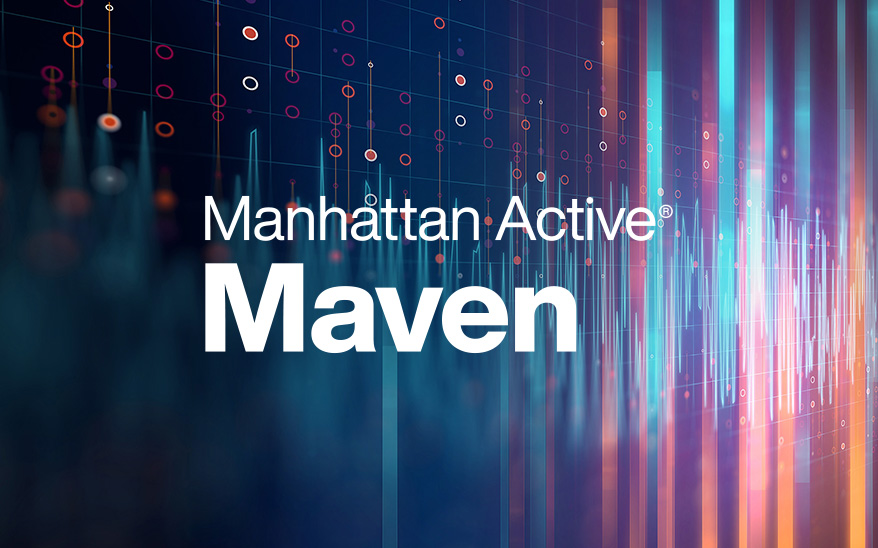Critical TMS Capabilities for Global Operations
- Manhattan
As we look forward to the future of logistics, the forecast for international shippers is unsettled. Economic headwinds and inflation could still affect businesses globally. Fuel costs, which continue to rise, will likely remain volatile. Meanwhile, the number of items being shipped is expected to remain high.
Having the right transportation management system (TMS) is more important than ever. There are three critical capabilities a TMS should have that will help companies minimize costs and maximize customer service. These capabilities include delivering as much visibility as possible—with the ability to act, managing and mitigating the complexity that comes with global logistics operations, and having a technology platform that is engineered to adapt to business needs today and into the future.
See, Act, Succeed
Visibility in any transportation setting is important but for international operations it’s essential. With every mode and stage of the journey, the variables that can influence shipments increase exponentially. As much real-time vision as possible along the way gives shippers the best chance to overcome disruption.
The ability to see along the multimodal, shipping journey extends beyond what any TMS can provide by itself. You can fill the inevitable gaps by having a solution that can draw information from API, EDI, visibility partners, mobile apps, and other sources. The right TMS not only seamlessly integrates those third parties—and can add any additional partners in the future—but also consolidates all the information in an easy-to-read fashion. Finally, and just as importantly, the transportation management system must make visibility information actionable.
In a global supply chain, any change in a shipment causes ripple effects. There is an immediate transportation plan that needs updating. Based on those modifications, there could be other business impacts that need to be addressed, from costs to sustainability. In addition, there are warehouse, inventory, and labor ramifications if a truck is going to be delayed or not arrive at all.
If there’s a disruption, communicating with your customers is key to delivering exceptional service and maintaining good relationships. The better your visibility, the sooner you are aware of problems and the sooner you can develop solutions. The right TMS can alert you as soon as possible and give you as many proactive options as possible to formulate your response.
Mastering Complexity
Logistics operations are facing more shipments, tighter windows, higher costs, and more volatility. Complexity is a way of life in the industry. But large-scale operations that span multiple countries and continents, using every imaginable mode, deal with challenges at an even higher magnitude. Organizations with yesterday’s TMS—or no TMS at all—will struggle to maintain service levels and profitability.
A modern TMS was designed to be powerful and intelligent enough to deal with complexity. For global operations, that means the ability to create a supply chain ecosystem of partners that can be added seamlessly and then manage everything from a central point. Another key TMS attribute is automation. The technology delivers continuous optimization that automatically solves across modes and geographies to lower costs, ship less air, and reduce miles. It takes care of tasks like assigning carriers, rate approvals, and more, so your planners only need to manage by exception.
Machine learning is another way a leading TMS can mitigate complexity. In an area like carrier selection, it can help the user remove guesswork and assign the correct partner for the situation. Beyond just cost the technology analyzes key factors like historical performance, sustainability ratings—and anything else you deem important—to ensure the right decisions are made, shipments keep moving and customer service levels remain high.
Today’s Technology for Today’s Challenges
Legacy TMS solutions were created for a logistics world that doesn’t exist anymore. Technology engineered specifically to stay ahead of ever-changing, ever-expanding transportation networks is key to driving lower costs and providing better customer service.
How can you identify the right TMS? Look for some specific characteristics. It will be cloud-native, built on a microservices architecture, and evergreen which means it’s always current, never needs upgrades, and automatically scales to meet demands. It will be designed with an API-first approach to allow easy integration with other systems. And, it will offer extensibility at every level, allowing you to tailor the solution to fit your specific business needs.
In addition, the right TMS should have an intuitive user interface, enabling seamless integration and collaboration with colleagues, customers, and partners. If the solution is built on the same platform as your WMS and yard management solution, it gives you even more opportunities for efficiency and agility across the entire supply chain.
Finally, the TMS will ideally come from a vendor that creates, implements, and supports the software, with offices all over the world to serve your global needs.
How can Manhattan help you?
Manhattan has the most experienced transportation team in the industry. Our solution, Manhattan Active® Transportation Management, is a five-time Gartner Magic Quadrant Leader and has been built to continuously optimize your network with every disruption, challenge, or change. Across industries and worldwide, we have the technology and expertise to help you thrive today and into the future.
Give us your most ambitious transportation goals. We’ll make them possible.





